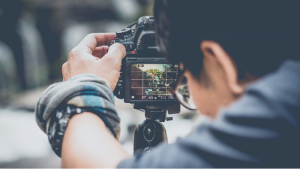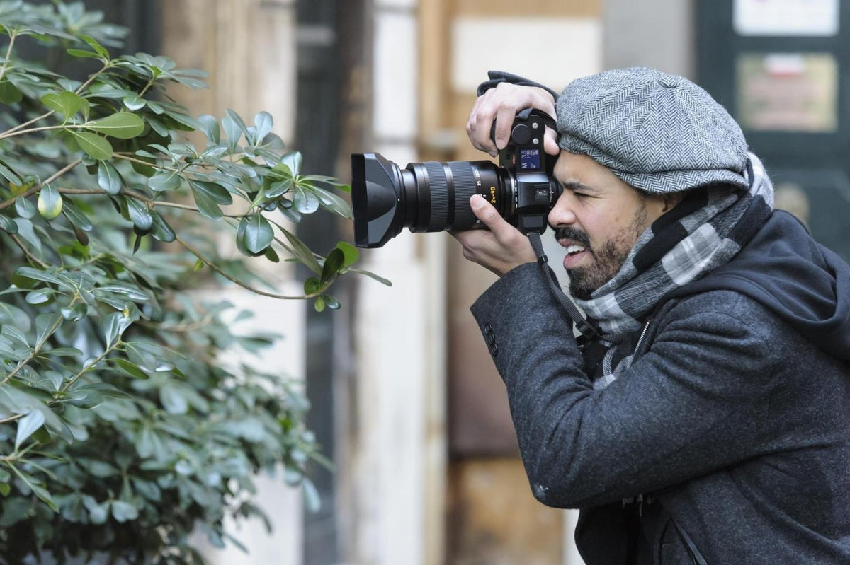So, are you looking for more exposure for your work? Want to get a nice collection of post clips?
Magazines represent a great opportunity for your work to be seen by many people in different places. Magazines, like most of the fields of journalism, have had their ups and downs in recent years. But many still exist and are always in need of great photography. This article will help you understand what magazines and publishers are looking for in terms of standards, photo quality, and editing.
Does the size of the photo matter?

With the recent changes in DSLR cameras from cropped to full-frame, image sizes continue to increase and megapixels will continue to rise. For some of the high-end cameras, there is a way up. But what does it take to fill the glossy pages of magazines?
The real answer is that it really depends. For news/sports / editorial publications, an image from a standard DSLR will work quite well because megapixels are not as important as they usually are.
Ken Rockwell, a photographer, and avid equipment reviewer unravel the ” megapixel myth,” a myth that requires a high-megapixel camera to produce high-quality prints.
Today, even the cheapest cameras are at least 5 or 6 MP, which is sufficient for any print size. How? Simple: when printing something three feet (1m) wide, you get further back. Print a sign, and you stand 100 feet behind. With 6 megapixels it is enough.
Any modern DSLR (10MP and up) can have frames used for a double-carriage differential (or two pages). If your camera shoots less than 10MP, your images can be used to fill an entire page. As with any type of photographic printing, it is less about the megapixels and more about the quality of the photo.
Horizontal vs Vertical
The image above shows a horizontal image cropped to a vertical image. In this case, the photo would not work as a portrait.
A magazine is a very different canvas for your work than a typical print. By printing your photo, you can frame it and hang it in any way you like. It can be 8×10 or 10×8. With magazines it is different. Most magazines are designed for vertical photos. Otherwise, you would have to actually crop an image.
Inside a magazine, they will be horizontal, but many of the photos are vertical because they allow for better text and layout fit. And 9 times out of 10 the cover photo will be vertical (unless the magazine has a unique layout or is cropped horizontally).
Remember this when you are shooting. Or, do like many professionals and take a photo both horizontally and vertically, to cover all your bases if you are not sure how the photo will be used.
Photo Editing
Toning Tips
Professionally produced magazines use the CMYK color process, and unless your monitor is set for CMYK, it can be a pain to make sure of the perfect shade.
Don’t let this stop you from toning it yourself, but keep in mind that they will probably readjust the photo to match their internal standards.
Be careful with the editing
In recent years, many magazines have had major gaffes with image editing. In the world of commercial photography, airbrushing and extreme editing is common, but not in the world of publishing and photojournalism. Make sure you know the rules and practices for the kind of magazine you are dealing with. In this way, everyone is on the same page and the photos are treated appropriately.
You don’t want to end up in Photoshop Disasters, a website with all about bad editing in Adobe Photoshop.
Property and Rights
The big question is: after photographing something for a publication, who owns it?
In the United States, copyright can work in two ways. Most of the time for photographers, either (the author) has the work under the copyright law of 1976, or it works for hire. Contract work is a very common practice, but many photographers dislike it and have given it a bad connotation.
Contract work is defined in United States law as:
“It is a ‘work performed under contract’: (1) a work prepared by an employee within the scope of his employment; or (2) a work specially ordered or commissioned for use as a contribution to a collective work, as part of a film or other audiovisual work, as a translation, as a complementary work, as a compilation, as an informational text, as a test, as response material for a test, or as an atlas, if the parties expressly agree in a written document signed by them that the work will be considered a work performed by contract. (17 USC § 101) ”
To learn more about contract work, Dan Heller has written a great post detailing paid work for photographers. So where is the ownership of the license for the photos you’ve taken?
It really depends on how the contract you signed is worded. Notice how they have everything detailed. Do customers get a lifetime license to use the images on any medium, or do they get a one-time use in print? Photo Critic has written a great post on the different types of licenses for photographers.
The key to ownership is knowing what is being signed. And making sure both parties are aware of the settings.
Sharp Images Matter
Magazines are one of the few mediums where poorly defined photos will be very obvious.
Photo editors want photos that jump off the page and attract readers’ interest, for this reason, they need sharp photos (the highest level of sharp photos that a photographer can take).
When taking photos, make sure your hand is steady so your photos are sharp. If necessary, focus on them later in Adobe Photoshop.
If you’re shooting something like an interior or landscape, use a tripod and remote release button to help improve camera stability and consistency.
Define the Deadline
Magazines and publications use a very different calendar than newspapers and corporate clients. Take into account the deadlines of the publication of the art and know when they send them to print. Make sure to communicate with them as you work and prepare any of the assignments so they know what to expect.
Start Locally
Before trying and tackling a national publication like Time magazine, start locally and build your portfolio.
Now more than ever, local magazines are popping up that cover local interests. Since they are already in the coverage area, you should have a better chance of getting involved. And photographing local subjects without having to worry about transportation. And additional expenses like food, accommodation, or travel expenses.
Work locally to gain experience and get a sample of the work that should help you land more jobs in the future and possibly more business with local photography.
Additional Resources
Here are some sites to help you jump-start your magazine career:
Mastheads provide an extensive list of magazine headers, where data such as editor and photo editor appear.
Photo Business News & Forum provides a great source of business advice and tips to help you with best practices.
You may also be interested in 20 PHOTOGRAPHY MAGAZINES YOU SHOULD FOLLOW ON INSTAGRAM

